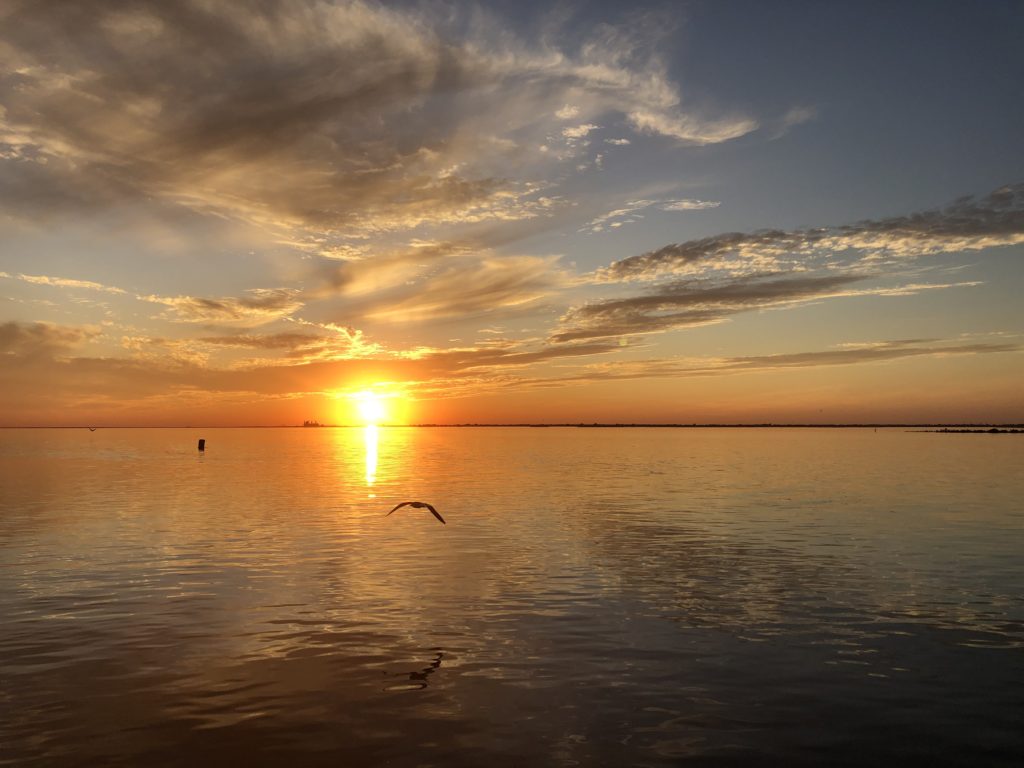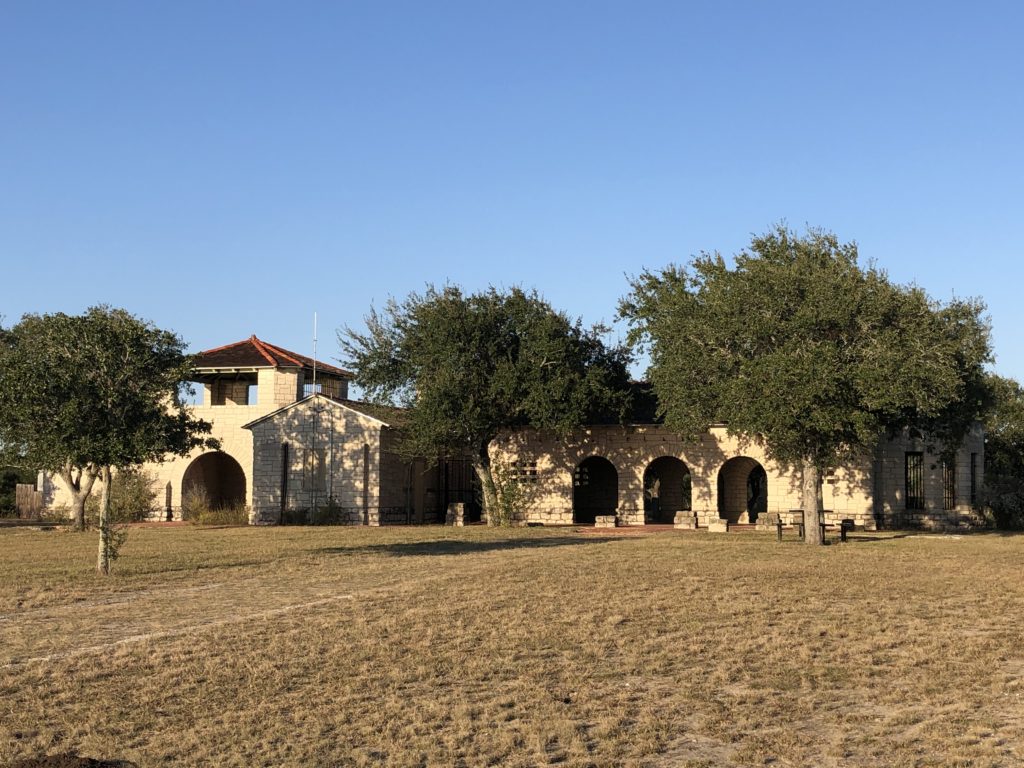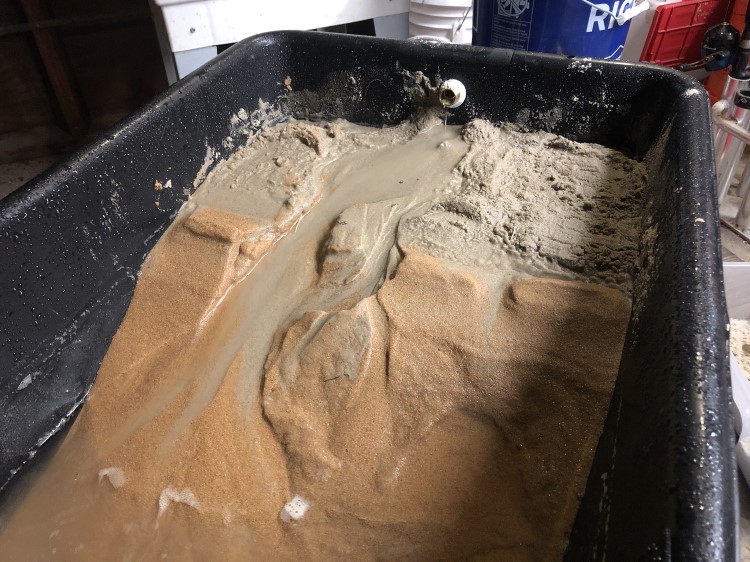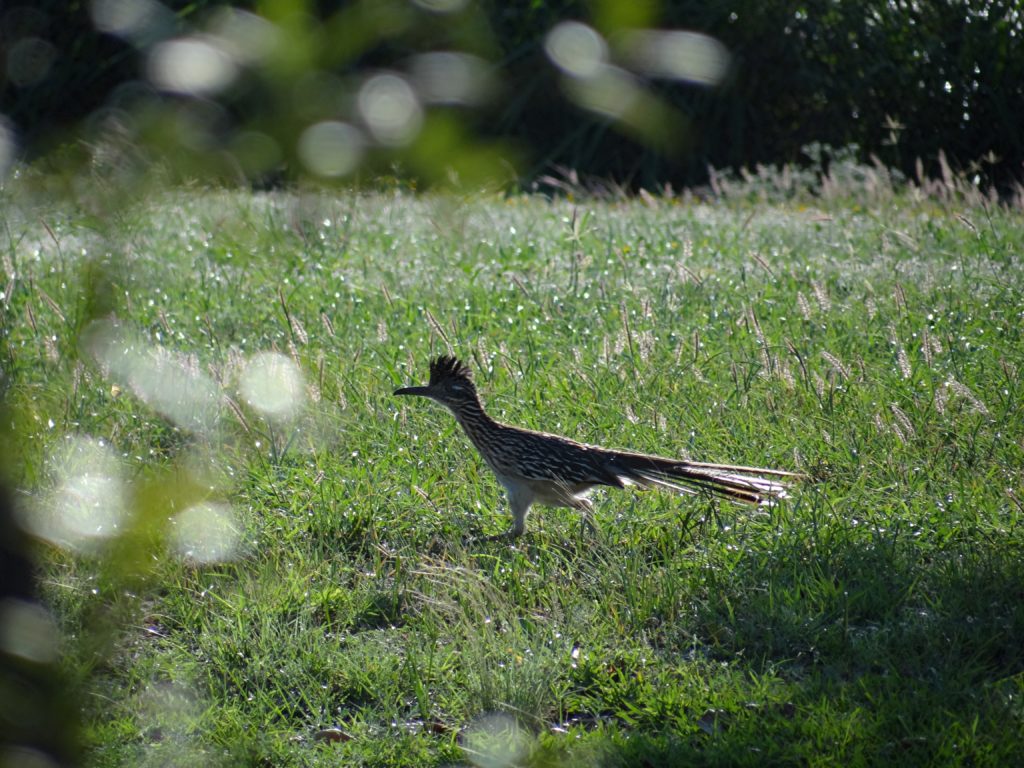Fostering Community Stewardship
There is an intrinsic value to land, air and water that has a profound effect upon our senses. Natural resources make our life beautiful in addition to providing the physical material we need. Community-based stewardship empowers local communities to take a more active role in the practice of caring for natural resources. Texas Parks and Wildlife has developed a Stewardship program, The Texas Master Naturalist Program, whose primary mission is to develop a corps of well-informed community derived volunteers to provide education, outreach, and service dedicated to the beneficial management of natural resources and natural areas within their communities for the State of Texas.
This program is a partnership between Texas A&M AgriLife Extension and Texas Parks and Wildlife (TPW). There are some 48 local Chapters serving 213 counties in Texas. The main goal of a local chapter is to fulfill the overall mission of The Texas Master Naturalist Program. Towards this end the primary mission of a local chapter is to develop a training program that fosters a curriculum associated with resource stewardship and the development of community assets. The training program provides education in understanding natural resource ecology at the local level, advancing opportunities for outreach, and service within the communities that the local chapter serves. The training of well-informed volunteers is a way of empowering local chapters to take a more active role in sustaining community natural resources and thereby the State of Texas.
The training objectives of a local chapter recognize that the participation of local communities is essential for the success of conservation initiatives for both the local community and the State. The program, therefore, creates a framework for a strong alignment between community activities and Texas government initiatives that ultimately, facilitates better outcomes for communities. Consequently, the chapter training goal is to effectively align community actions with natural resource management strategies that may improve conservation outcomes by supporting education and volunteerism within the local service area.
For the South Texas Chapter our first objective is to offer training to individuals in natural resource ecology particular to our local communities. This includes identifying fauna, flora, water resources, and the landscape of our tri-county area – Nueces, Kenedy and Kleberg. Curriculum development in soils, geology, plant and avian identification, and marine invertebrate and water analyses are conducted at particular-training sites that reflect the uniqueness of our South Texas ecosystem.
Our Chapter Initial Training (IT) objectives are:
- To introduce the trainee to the natural resource assets of the local communities that the chapter serves.
- To provide the trainee with the skills they need to develop as a volunteer educator focusing on habitats, natural resources, and the natural environments of the local communities.
- To introduce opportunities that connect trainees with nature and help them become engaged environmental stewards and valued volunteers.
We have several training sites that reflect different elements of our unique South Texas environs that are important to the interpretative narrative of our history and our interaction with our ecosystem:
Mustang Island and Padre Island training sites provides us with a glimpse of a modern barrier island system – one of 300 hundred islands stretching from Maine to Mexico. Natural barrier islands are beneficial to protect the mainland from the direct onslaught of storms. Barrier islands are dynamic systems that are easily affected by wind, tides, currents, storms, and humans. Mustang Island, fed by the Gulf Coast rivers and longshore currents, provides the naturalist an example of a “low-profile” barrier island scarred with washover events from the Gulf of Mexico. These breaches cause a significant change in the landscape of an island. Cuts across the dunes lead to the significant modification of the island by storms with the excavation of new inlets. In contrast, Padre Island, the world’s longest barrier island is very wide and it has well-developed, fore-island dune ridges characteristic of a “high-profile” barrier. These dune ridges block storm surge and dissipate large amounts of wave energy.
Life adapts and thrives on these narrow strips of sand and mud, taking advantage of the dynamic conditions. The anthropology of Mustang and Padre Islands is germane to this ecosystem and important to the area’s historic resources. Historically three identifiable cultures, Indian, Spanish, and American, have utilized these Islands. Each culture related to the island’s environment on several levels. Karankawa Indians were the earliest known inhabitants of Mustang Island. Fish and shellfish, small game and local plants kept them healthy and well-fed. Settlers began farming and running cattle, sheep, and hogs on the island in the mid-1840s. TPW bought 3,954 acres on Mustang Island in 1972 from private owners. The “State Park” opened in 1979.
For Padre Island the most important single fact in the island’s past is that it has a limited human history which did not negatively impact the Island. As a result, Padre Island became one of the very few barrier islands in the United States not altered in one way or another by man. Padre’s untouched or unaltered natural environment led some to suggest that such an area should be preserved for its scientific, scenic, and recreational values – hence its designation as a National Seashore in 1971.
Lake Corpus Christie State Park, Hazel Bazemore and the Nueces Delta Preserve all share something in common – the lower Nueces River Basin. The Nueces River basin, associated coastal basins, bays and estuaries comprise about 31,500 square miles of South Texas. The area stretches from the Texas Hill Country to the Gulf of Mexico. The Basin is noted for its diverse agriculture. Wool and mohair production, vegetable crops, farming and ranching, and mineral production such as oil and gas extraction and asphalt and stone mining are some of the ways the lands are used in the basin. Much depends on the good health of the creeks, river and bays that drain this part of Texas. The watershed includes portions of three major aquifers – the Edwards, Carrizo-Wilcox, and Gulf Coast. The Basin occupies a relatively arid region of Texas. Animals native to the area include white-tailed deer, javelina, ocelot, bobcat, coyote, armadillo, skunk, raccoon, squirrel, turkey, alligator, and a diverse array of other small mammals and birds. Feral hogs (non-native, invasive species) are also common in the watershed. The watershed lies in a relatively arid region, having the third lowest annual yield of water among major river basins of Texas. Poor land use practices, recent near-record droughts, and conflicting water resource management issues have resulted in significant environmental degradation of the Basin. Yet, the area is popular with naturalists and outdoorsmen who enjoy the scenic beauty for its birding, hiking, camping, nature study, hunting and fishing. In 1935, then President Franklin Roosevelt funded construction of the Wesley Seale Dam and Lake Corpus Christi was born. In 1958, the present dam was completed in response to concerns surrounding reduced storage capacity due to silting. Lake Corpus Christi is now one of the largest man-made water bodies in Texas expanding 21,000 acres and with a capacity of 300,000-acre feet. Families have been enjoying Lake Corpus Christi State Park for more than 80 years and provides an excellent venue through interpretative training to enable a better understanding of our relationship to the environment, but also helps to promote the preservation and sustainable use of resources within and beyond State Park boundaries.
Hazel Bazemore County Park is a unique location in the United States because of the avian migratory patterns. It is 77 acres with native tree and plant trails, bird watching trails, hawk watch platform, and blinds. The Nueces River courses along one edge of the park. The Park was opened in 1955. It boasts the highest concentration of migrating raptors in the United States. Hawk enthusiasts have known about it for more than thirty years, and formal counts have taken place there since 1977. Geologically, the steeper landscape of Hazel Bazemore Park makes for dramatic cliffs and spectacular views across the Nueces Valley looking northward. This landscape Park is principally due to the failures of the Beaumont Formation along the old “cut bank” of an outside loop of the Nueces River. The gentle rolling terraced landscape is a combination of blocks of Beaumont that have been periodically and naturally terraced by regular flood stages of the river and river terraces (Deweyville Formation) indicating a complex geologic history of the valley.
The Nueces Delta Preserve is a part of the Coastal Bend Bays and Estuaries Program, encompassing over 10,000 acres in the Lower Nueces River Valley adjacent to Nueces Bay. The Nueces River Delta represents a unique mosaic of highly productive wetlands, open water, islands, prairie, and river and bay shorelines. The Delta Preserve is one of the largest accessible wilderness areas near Corpus Christi. It is the home to hundreds of wildlife species and many hundred bird species who visit during their annual migration. Javelinas, armadillos, harvester ants, badgers, and owls, are a few of the cool creatures that call this place home. The Preserve is NOT a public park and access is restricted but provides for field trips, workshops, and outreach events.
The Oso Bay Wetlands Preserve & Learning Center is a 162-acre nature preserve serves to enhance the Corpus Christi community understanding for the need to preserve the natural resources of coastal ecosystems for future generations through access and education. The Preserve is a model for an urban park. City parks play a vital role in the social, economic, and physical well-being of cities and their residents. The Preserve provides a glimpse of landscape creation, habitat creation, enhancing wildlife corridors, and helping to manage carbon emissions and to manage the effects of climate change, including providing space for surface water management, micro-climate management (for example providing cool spaces in built up urban areas), and carbon sequestration.
Welder Wildlife Refuge and Preserve was established in 1954 by the will of Robert Hughes Welder, which provided for the foundation and operation of the 7,800 acre refuge in San Patricio County. It is noted for providing opportunities for research and education in wildlife conservation and related fields. Wilder is in a transition area between the tropics and the temperate zone and has a greater variety of plants and wildlife than any other area of comparable size in the world. More than 400 species and subspecies of birds have been observed in the refuge or its immediate vicinity. At least fifty-five species of mammals, reptiles, and amphibians have been recorded there, and more than 1,300 species of plants have been found on or near the refuge.
Aransas National Wildlife Refuge (ANWR) is celebrated for home of the annual return of the Whooping Cranes to their wintering habitat. The Texas Coastal Bend is the only place where you can see the world’s last naturally occurring population of Whooping Cranes. It was established by Executive Order 7784 on 31 December 1937 by President Franklin D. Roosevelt as a refuge and breeding ground for migratory birds and other wildlife, encompassing some 115,000 acres. Its geomorphology is made up of the ancient barrier island, part of a system of Pleistocene-aged islands extending from South Texas through Mississippi. The geologic history and the modern biological habitat are inseparable in their essential ecological relationship, providing a unique learning experience for a Master Naturalist.
Another Chapter training mission is to develop a corps of volunteers with a knowledge base in natural resource ecology as assets to enhance outreach efforts within local communities. Volunteers are an essential part of the Texas state parks’ team. TPW depend on volunteers to help carry out the mission of communities across the State. Volunteers play a pivotal role in assisting public and nonprofit organizations to accomplish their goals and assist with daily operations. Volunteers are reflective of positive advocacy for environmental community stewardship. Environmental stewardship activities aid agencies in various types of work, such as restoring ecosystems, monitoring resources, citizen science, policy planning, and decision-making. By involving volunteers, agencies obtain the benefit of getting essential work completed and reducing personnel expenses. There is an increase in the number of urban and rural stewards caring for and improving local environmental conditions across the United States. The benefits that volunteers gain from their experiences in doing stewardship activities include helping the environment, socializing with people with similar values and improving areas that volunteer use for their own recreation and those for the future. Many of the training sites are available for volunteer efforts. But that’s not all!!!! Our Chapter Website lists at least 50 potential volunteer opportunities available to Chapter members. Volunteering to help maintain, and restore habitats, and educate others in environmental stewardship is a wonderful way to enjoy the outdoors, cultivate ones Master Naturalists skill set and help protect important community activities.
Our Chapter also supports advance Master Naturalist (AT) training. The objectives for AT are:
- To reinforce and expand skills focusing on habitats, natural resources, and the natural environments of the local communities.
- To introduce new ideas and individuals to augment local conservation and restoration efforts.
- To introduce opportunities associated with State initiatives and objectives of the Texas Master Naturalist Program.
Master Naturalist programs nation-wide have basically the same goal – to provide unique opportunities for scientists and resource managers to engage the public and promote stewardship through education, volunteer opportunities, and citizen science. This mutualistic relationship benefits not only the public that learns from experts and participates in real-world management projects, but also the managers who achieve a broader impact of their work and receive valuable volunteer assistance in fulfilling their management goals. Likewise, reconnecting individuals with nature benefits personal health and wellness, educates stakeholders about the importance of conservation, and enhances individual participation in stewardship efforts for community sustainabiity.







